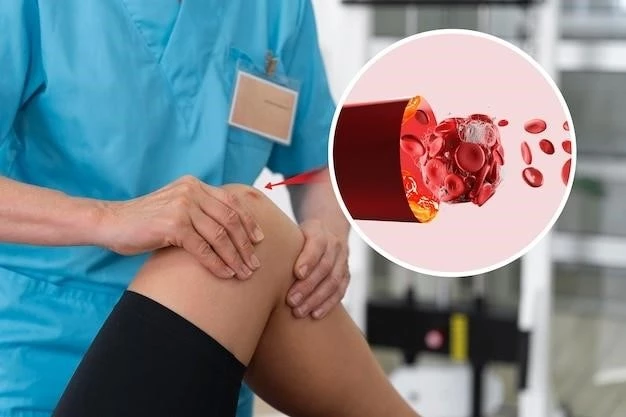Disease ⎼ Ectodermal Dysplasia Osteosclerosis
Ectodermal Dysplasia Osteosclerosis is a genetic condition that combines features of ectodermal dysplasia and osteosclerosis. This rare hereditary disorder is characterized by skeletal dysplasia, along with abnormalities in the hair, nails, and skin.
Introduction to Ectodermal Dysplasia Osteosclerosis
Ectodermal Dysplasia Osteosclerosis is a rare genetic disorder that manifests as a combination of ectodermal dysplasia and osteosclerosis, affecting multiple systems in the body. This hereditary condition presents with skeletal dysplasia characterized by abnormalities in bone development and structure. Individuals with this syndrome may exhibit dental abnormalities, such as missing teeth, malformed teeth, or delayed tooth eruption.
Furthermore, hair abnormalities, including sparse hair, slow hair growth, or coarse hair texture, are common in individuals with Ectodermal Dysplasia Osteosclerosis. Nail abnormalities, such as thin nails, ridged nails, or brittle nails, may also be present. Additionally, skin abnormalities like dry skin, hyperpigmentation, or increased susceptibility to skin infections can be seen in affected individuals.

Due to the varied nature of symptoms associated with Ectodermal Dysplasia Osteosclerosis, a thorough medical diagnosis is essential. Proper evaluation by a healthcare professional familiar with genetic disorders is crucial for identifying and understanding the specific abnormalities present in each individual. Once diagnosed, a tailored treatment plan can be developed to address the unique needs of the patient, focusing on symptom management and improving quality of life.
Understanding Ectodermal Dysplasia
Ectodermal Dysplasia is a group of genetic disorders that primarily affect the ectoderm, which is the outer layer of embryonic tissue. These conditions are characterized by developmental abnormalities in structures derived from the ectoderm, such as the skin, hair, nails, teeth, and sweat glands. Since ectodermal dysplasias are hereditary, they can be passed down from parents to their children.
Individuals with ectodermal dysplasia may exhibit a range of symptoms based on the specific subtype of the disorder. Common manifestations include dental abnormalities like missing teeth, malformed teeth, or a reduced number of teeth. Hair abnormalities such as sparse hair, slow hair growth, or thin hair may also be present.
In addition, nail abnormalities like thickened nails, ridged nails, or brittle nails can occur in individuals with ectodermal dysplasia. Skin abnormalities may include dry skin, eczema, or intolerance to heat. The severity of symptoms can vary widely among affected individuals, ranging from mild to severe.
Diagnosis of ectodermal dysplasia is typically based on clinical evaluation, family history, and sometimes genetic testing. Early detection of ectodermal dysplasia is crucial for initiating appropriate interventions and management strategies. While there is no cure for ectodermal dysplasia, treatment focuses on addressing individual symptoms and improving quality of life for those affected by the condition.
Overview of Osteosclerosis
Osteosclerosis is a medical condition characterized by abnormal hardening or increased density of bones. This skeletal dysplasia results from an imbalance in bone formation and resorption processes, leading to the excessive deposition of bone tissue. Osteosclerosis can affect various bones throughout the body, impacting their structure and function.
Individuals with osteosclerosis may experience bone pain, stiffness, or an increased risk of fractures due to the altered bone density. In some cases, osteosclerosis can lead to skeletal deformities or growth disturbances. This condition can occur as a primary disorder or as a secondary manifestation of other underlying health conditions.
Diagnosis of osteosclerosis typically involves a combination of imaging studies, such as X-rays or bone scans, to assess bone density and structure. In some cases, a bone biopsy may be necessary to confirm the diagnosis. Treatment options for osteosclerosis focus on managing symptoms and addressing any underlying causes contributing to the condition.
Research into osteosclerosis continues to expand our understanding of this medical condition, leading to advancements in diagnostic techniques and treatment modalities. Ongoing studies aim to identify genetic factors, molecular pathways, and potential therapeutic targets related to osteosclerosis, with the goal of improving patient outcomes and quality of life.
Symptoms of Ectodermal Dysplasia Osteosclerosis
Ectodermal Dysplasia Osteosclerosis presents with a combination of symptoms associated with ectodermal dysplasia and osteosclerosis. Individuals affected by this rare genetic disorder may experience skeletal abnormalities, including bone deformities, reduced bone density, and bone pain.
In addition to skeletal dysplasia, dental abnormalities are common in individuals with Ectodermal Dysplasia Osteosclerosis. These may include missing teeth, malformed teeth, delayed tooth eruption, or other dental issues. Hair abnormalities such as sparse hair, slow hair growth, or coarse hair texture can also manifest in affected individuals.
Nail abnormalities, including thin nails, ridged nails, or brittle nails, are frequently observed in individuals with this condition. Furthermore, skin abnormalities like dry skin, hyperpigmentation, or increased susceptibility to skin infections may be present. The varied nature of symptoms in Ectodermal Dysplasia Osteosclerosis necessitates a comprehensive medical evaluation for accurate diagnosis and appropriate management.
Diagnosis of Ectodermal Dysplasia Osteosclerosis
Diagnosing Ectodermal Dysplasia Osteosclerosis involves a thorough medical evaluation, including a detailed patient history, physical examination, and diagnostic tests. Imaging studies such as X-rays, CT scans, or MRIs may be used to assess skeletal abnormalities and bone density.
Genetic testing plays a crucial role in identifying specific gene mutations associated with Ectodermal Dysplasia Osteosclerosis. A genetic counselor can provide information about inheritance patterns and help families understand the implications of test results. Additionally, dental examinations and skin assessments can aid in confirming the diagnosis.
A multidisciplinary approach involving healthcare professionals with expertise in medical genetics, orthopedics, dentistry, and dermatology is essential for a comprehensive diagnosis of Ectodermal Dysplasia Osteosclerosis. Early detection and accurate diagnosis are key in initiating appropriate treatment strategies to address the diverse symptoms and improve quality of life for individuals affected by this rare genetic disorder.
Treatment Options for Ectodermal Dysplasia Osteosclerosis
Managing Ectodermal Dysplasia Osteosclerosis requires a multidisciplinary approach to address the diverse symptoms associated with this genetic disorder. Treatment strategies are aimed at improving quality of life, managing symptoms, and addressing specific abnormalities present in affected individuals.
For skeletal dysplasia and osteosclerosis, treatment may include physical therapy to maintain mobility, orthopedic interventions to address bone deformities or fractures, and medications to manage bone pain or increase bone density. Individuals with dental abnormalities may benefit from dental prostheses, orthodontic treatments, or dental implants to improve oral function and aesthetics.
Hair abnormalities in individuals with Ectodermal Dysplasia Osteosclerosis can be managed with specialized hair care products, styling techniques, or hair transplantation procedures. Nail abnormalities may require regular monitoring, moisturization, and protective measures to prevent damage. Dermatological interventions can help address skin abnormalities and minimize the risk of infections.
Regular follow-up appointments with healthcare providers specializing in genetics, orthopedics, dentistry, and dermatology are essential to monitor disease progression, adjust treatment plans as needed, and provide ongoing support to individuals and their families. By addressing both the skeletal dysplasia and ectodermal abnormalities associated with Ectodermal Dysplasia Osteosclerosis, healthcare professionals can enhance the overall well-being of affected individuals.
Research and Advances in Ectodermal Dysplasia Osteosclerosis
Ongoing research into Ectodermal Dysplasia Osteosclerosis aims to further understand the underlying genetic mechanisms, molecular pathways, and clinical manifestations of this rare genetic disorder. Advances in genetic testing techniques have improved the accuracy of diagnosis and identification of specific gene mutations associated with the condition.
Researchers are exploring potential targeted therapies and treatment modalities to address the skeletal dysplasia, dental abnormalities, hair abnormalities, nail abnormalities, and skin abnormalities seen in individuals with Ectodermal Dysplasia Osteosclerosis. Therapeutic advancements may offer tailored approaches to manage symptoms and improve quality of life for affected individuals.
Clinical trials and collaborative studies continue to investigate novel interventions for Ectodermal Dysplasia Osteosclerosis, with a focus on personalized medicine and precision healthcare. By elucidating the intricate genetic and molecular aspects of the disorder, researchers strive to develop innovative strategies for early detection, prevention, and therapeutic interventions.
Through interdisciplinary collaboration and scientific endeavors, the field of Ectodermal Dysplasia Osteosclerosis research is advancing our knowledge of this complex genetic condition. By translating research findings into clinical practice, healthcare professionals can enhance diagnostic accuracy, treatment efficacy, and overall outcomes for individuals affected by Ectodermal Dysplasia Osteosclerosis.
Conclusion
In conclusion, Ectodermal Dysplasia Osteosclerosis is a rare genetic disorder characterized by a combination of ectodermal dysplasia and osteosclerosis, presenting with skeletal abnormalities, dental issues, hair abnormalities, nail abnormalities, and skin abnormalities. Proper diagnosis and treatment involve a multidisciplinary approach to address the diverse symptoms associated with this condition.
Advances in genetic testing and research have enhanced our understanding of Ectodermal Dysplasia Osteosclerosis, leading to improved diagnostic accuracy and the development of targeted treatment strategies. Ongoing research endeavors aim to further elucidate the genetic and molecular mechanisms underlying the disorder, paving the way for innovative therapeutic interventions.
By integrating research findings into clinical practice and prioritizing personalized healthcare approaches, healthcare professionals can optimize outcomes and quality of life for individuals living with Ectodermal Dysplasia Osteosclerosis. Continued collaboration and advancements in the field of genetic disorders offer hope for enhanced management and treatment of this complex condition in the future.
